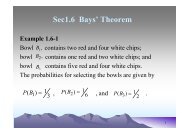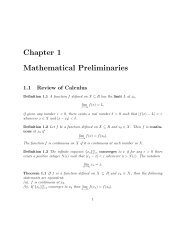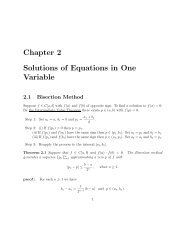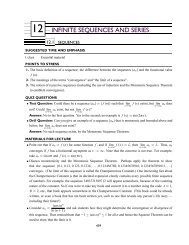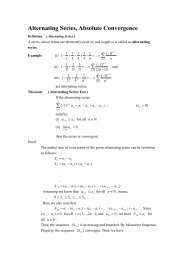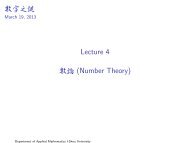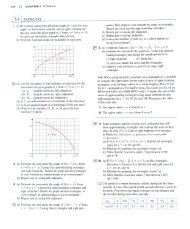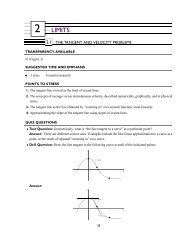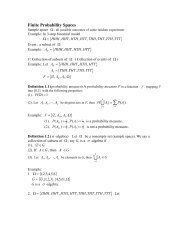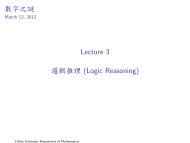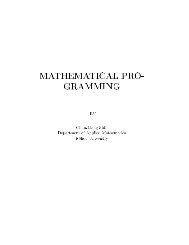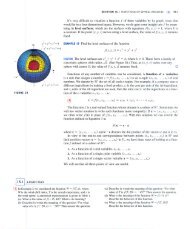[ill x = j .JY (y - 3),
[ill x = j .JY (y - 3),
[ill x = j .JY (y - 3),
You also want an ePaper? Increase the reach of your titles
YUMPU automatically turns print PDFs into web optimized ePapers that Google loves.
§ EXERCISES<br />
I. An aquarium 5 ft long, 2 ft wide, and 3 ft deep is full of<br />
water. Find (a) the hydrostatic pressure on the bottom of the<br />
aquarium, (b) the hydrostatic force on the bottom, and (c) the<br />
hydrostatic force on one end of the aquarium.<br />
2. A tank is 8 m long, 4 m wide, 2 m high, and contains kerosene<br />
with density 820 kg/m 3 to a depth of 1.5 m. Find (a) the hydrostatic<br />
pressure on the bottom of the tank, (b) the hydrostatic<br />
force on the bottom, and (c) the hydrostatic force on one end<br />
of the tank.<br />
3-11 A vertical plate is submerged (or partially submerged) in<br />
water and has the indicated shape. Explain how to approximate the<br />
hydrostatic force against one side of the plate by a Riemann sum.<br />
Then express the force as an integral and evaluate it.<br />
v = f: 217X[j(X) - g(X)] dx<br />
= 217 s: x [j(x) - g(x)] dx<br />
where d = 217X is the distance traveled by the centroid during one rotation about the<br />
y-axis. []<br />
L!J EXAMPLE 7 A torus is formed by rotating a circle of radius r about a line in the plane<br />
of the circle that is a distance R (> r) from the center of the circle. Find the volume of<br />
the torus.<br />
SOLUTION The circle has area A = l7r 2 . By the symmetry principle, its centroid is its center<br />
and so the distance traveled by the centroid during a rotation is d = 217R. Therefore,<br />
by the Theorem of Pappus, the volume of the torus is<br />
The method of Example 7 should be compared with the method of Exercise 63 in<br />
Section 6.2.



